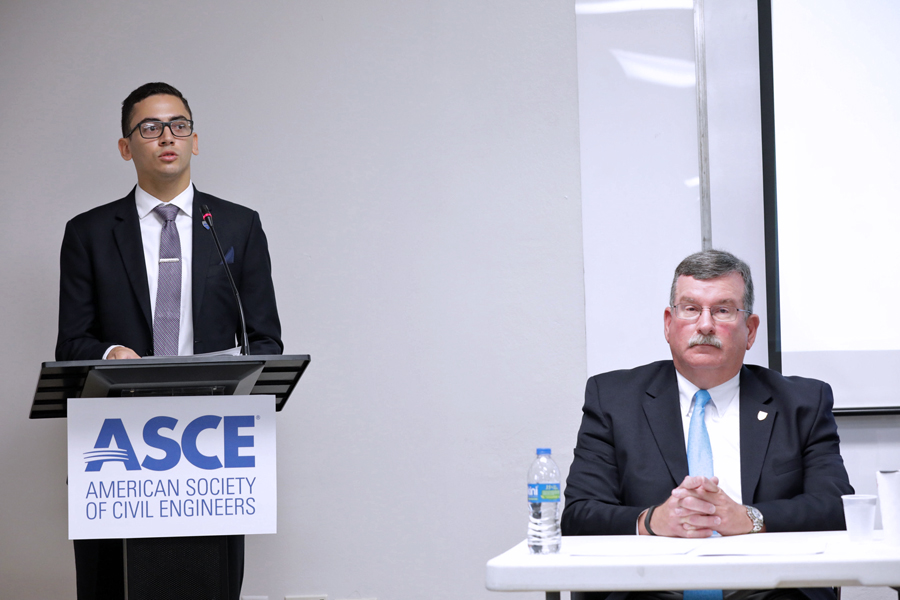P.R. gets failing grades for key infrastructure conditions

The 2019 Report Card for Puerto Rico’s Infrastructure released for the first time by the Puerto Rico Chapter of the American Society of Civil Engineers, giving eight categories of infrastructure an overall grade of a D-.
Energy received the lowest grade of “F,” meaning the system’s infrastructure is in unacceptable condition and has widespread advanced signs of deterioration. It is the first time the trade group known as ASCE has conducted an evaluation of the island’s infrastructure.
Civil engineers evaluated the following categories to reach a cumulative grade of D-: bridges (D+), dams (D+), drinking water (D), energy (F), ports (D), roads (D-), solid waste (D-) and wastewater (D+).
“Looking at these dire grades across all categories, I believe we have an opportunity here to make our island more resilient, sustainable, improve our economy and be better prepared when the next disaster strikes,” said Héctor J. Colón De La Cruz, president of the ASCE Puerto Rico Chapter and Puerto Rico Infrastructure Report Card chair.
“By following the recommendations in this Report Card — such as having a long-term comprehensive infrastructure plan approved and followed by the government, adopting a life-cycle approach for infrastructure and revising Puerto Rico’s design standards to adopt modern industry standards — as well as ensuring resilience is built into grid operations, we can extend the service life of our assets and decrease costs in the long term,” he said. “However, we need everyone — including the federal government — to step up.”
The report finds much of the island’s infrastructure is reaching the end of its useful life, and infrastructure networks are still be rebuilt after Hurricanes Irma and Maria devastated the island in 2017.
Water and water resources infrastructure is of particular concern, the report stated. In 2018, 65,697 water leaks and pipe breaks were reported, for an average of 4.38 leaks or breaks per mile of installed line, or 180 leaks per day.
Additionally, 97% of dams are high-hazard potential, meaning failure would result in loss of life. An estimated 40 to 60% of storage capacity in water reservoirs is lost due to sedimentation build up and an estimated 58% of non-revenue water is lost as a result of leaky pipes, tank overflows and other issues.
Bridges were also found to be in poor condition. Puerto Rico is home to four of the nation’s top 250 most travelled structurally deficient bridges, with two in the top 10. Only 19% of Puerto Rico’s bridges are in good condition. The ASCE did not reveal which of the island’s bridges are on that list.
To modernize the island’s infrastructure and support economic growth and competitiveness on the island, the report calculated that Puerto Rico must increase received investment by $1.23 billion to $2.3 billion annually — or $13 billion to $23 billion over 10 years.
“However, when considering deferred maintenance and hurricane-related recovery projects, the investment gap is even larger,” according to the report that stresses the need for the island to rebuild smarter by building to adequate codes and standards, acquiring funding from all levels of government and incorporating resilience into infrastructure plans by using climate-resilient materials.
The ASCE report also found:
- Puerto Rico Aqueduct and Sewer Authority lacks sufficient funding for capital-intensive wastewater infrastructure repair and replacement, causing more frequent leaks, overflows and breaks than the national averages;
- Puerto Rico’s already fragile ports infrastructure suffered severe damage as a result of the hurricanes. The estimated cost to repair all ports throughout the island is over $750 million; and,
- Capacity at existing landfills is an urgent concern, especially after hurricanes Irma and Maria produced approximately 2.5 million tons of debris, or 2.5 to 3 years’ worth of solid waste that was then disposed of at landfills. The U.S. Environmental Protection Agency found in 2018 that there is less than five years of remaining capacity at active landfills across the island.
Meanwhile, the report offered some solutions to the island’s infrastructure challenges:
- Increase the resilience of Puerto Rico’s infrastructure by building to ASCE standards, incorporating life-cycle cost analysis into projects and by maintaining existing assets, which will extend the useful life of our assets and decrease costs in the long-term;
- Increase drinking water infrastructure’s capacity and delivery;
- Improve and increase the technical expertise at agencies that own and operate infrastructure so that they can complete regulatory requirements. There should be an emphasis of workforce training to operate and maintain the island’s roads, dams, solid waste, drinking and wastewater infrastructure;
- Solid waste infrastructure needs immediate action and significant funding. Landfills in Puerto Rico are often lacking updated permitting or are unregulated, resulting in non-compliance with Environmental Protection Agency standards;
- Develop comprehensive maintenance programs and asset management databases, which can help determine total funding and maintenance needs; and,
- Establish a Puerto Rico Infrastructure Plan with clear priorities and strategies to achieve them. This plan should be developed with input from a wide variety of stakeholders.














